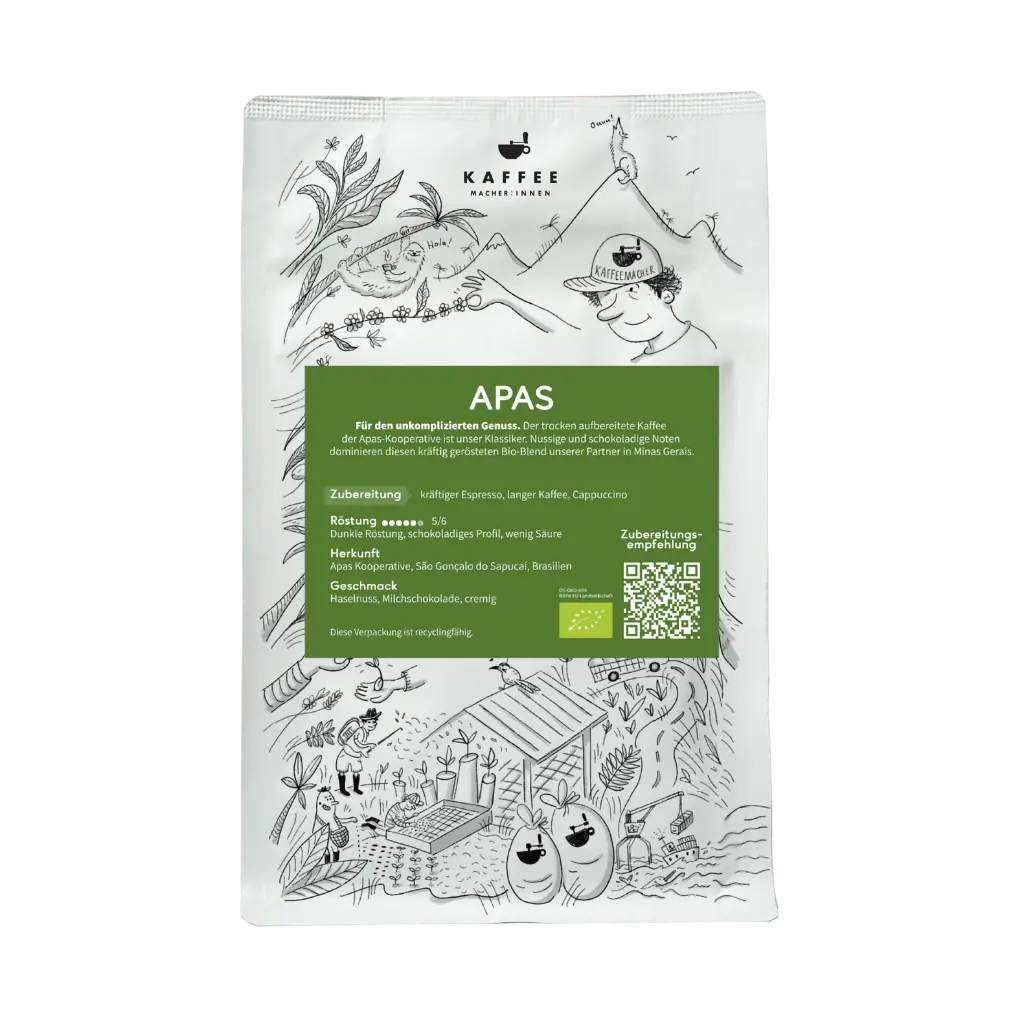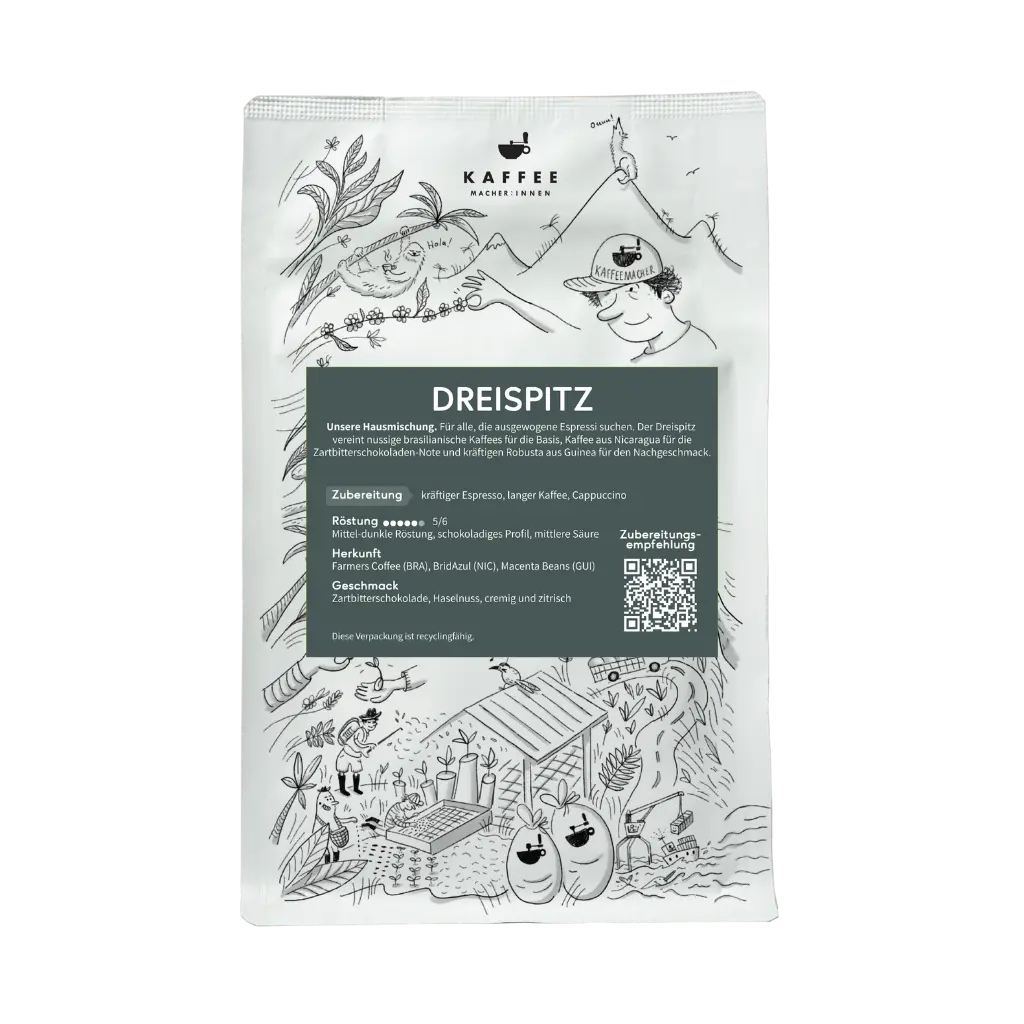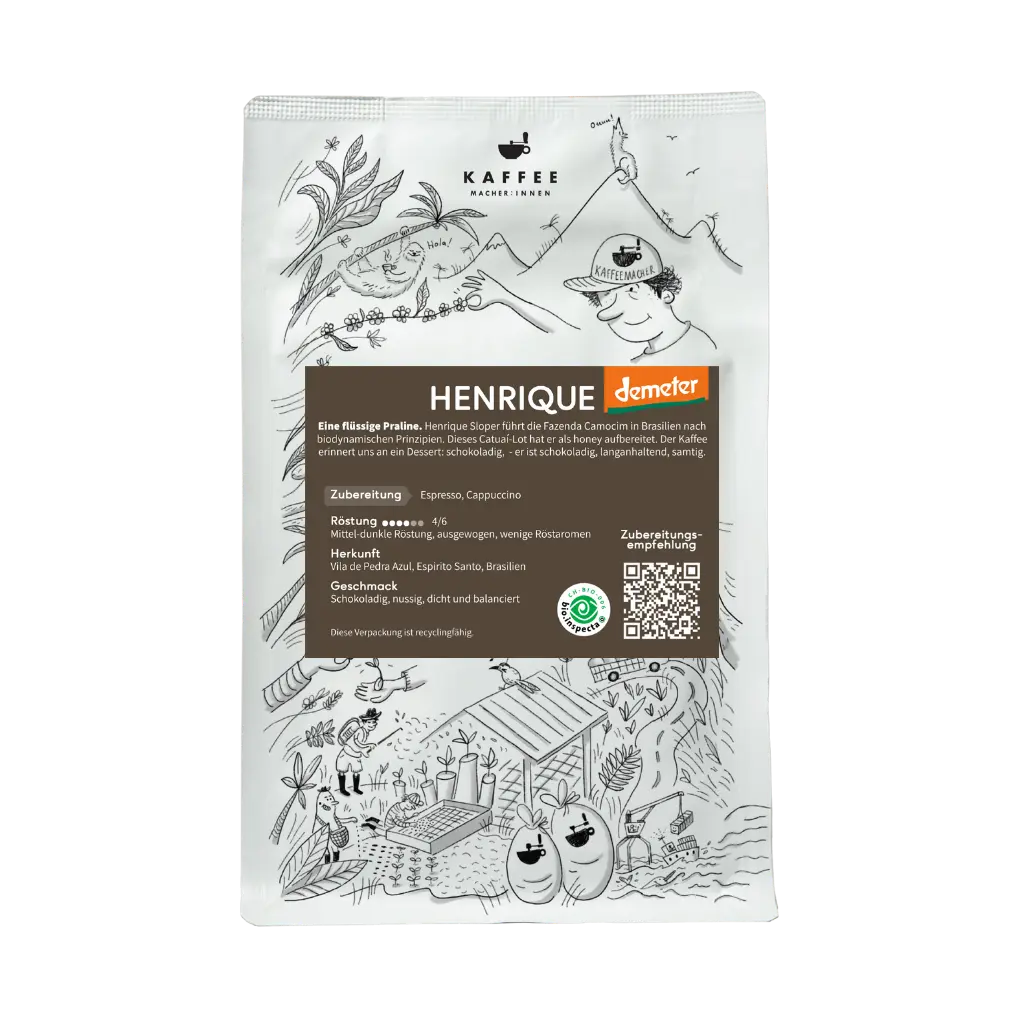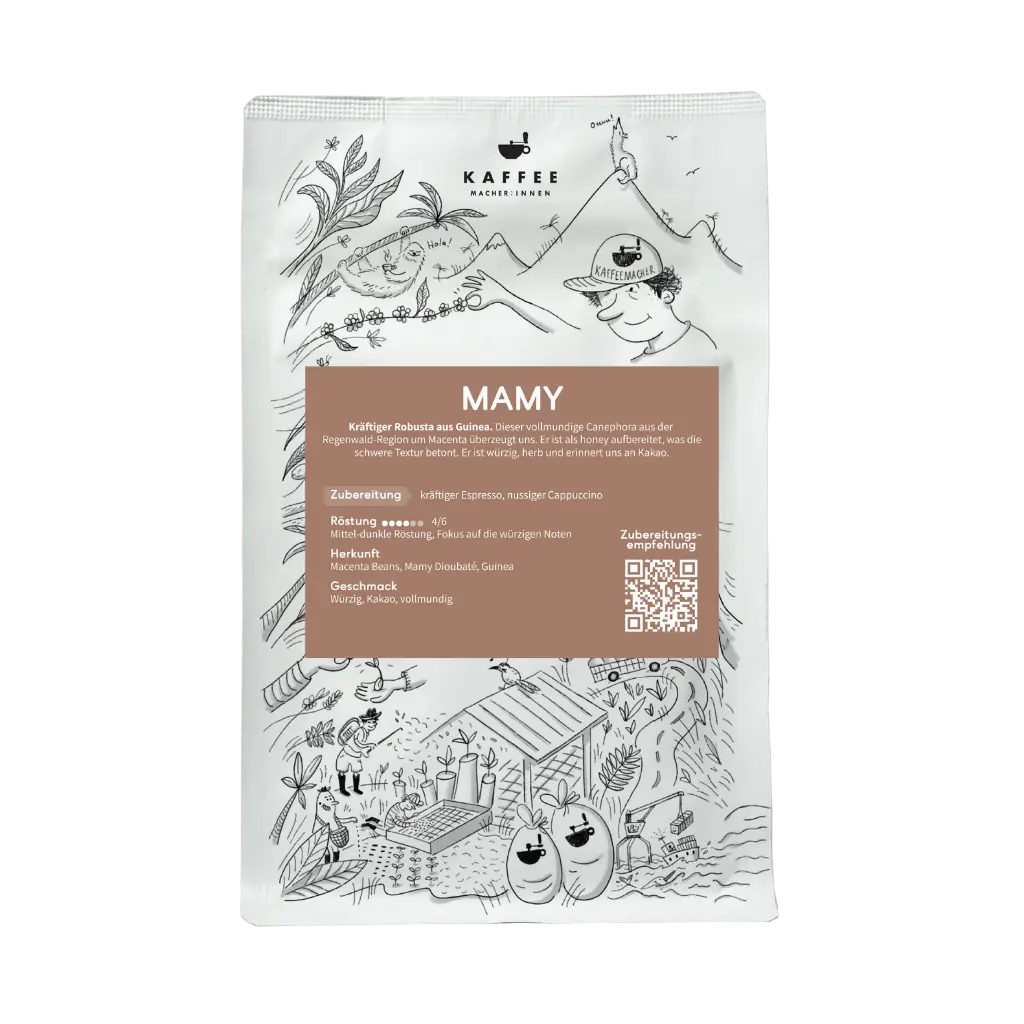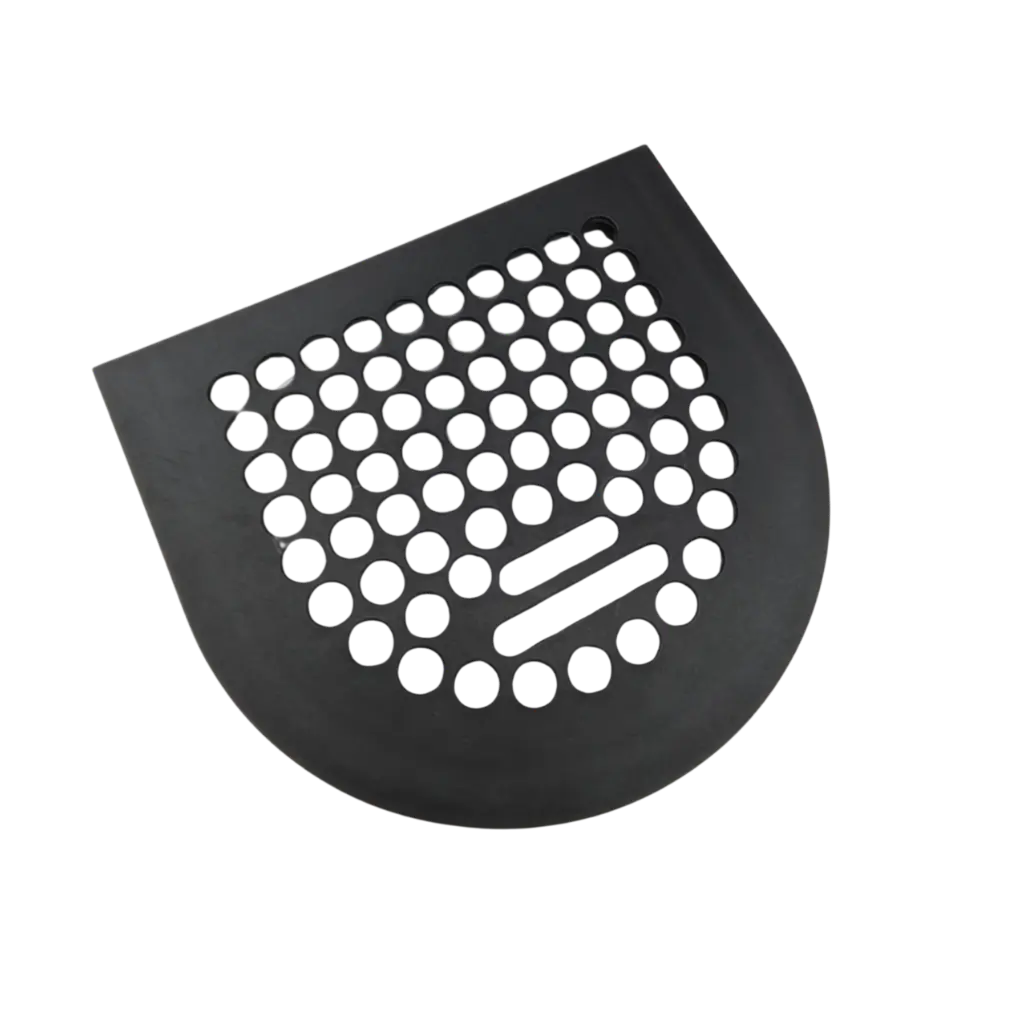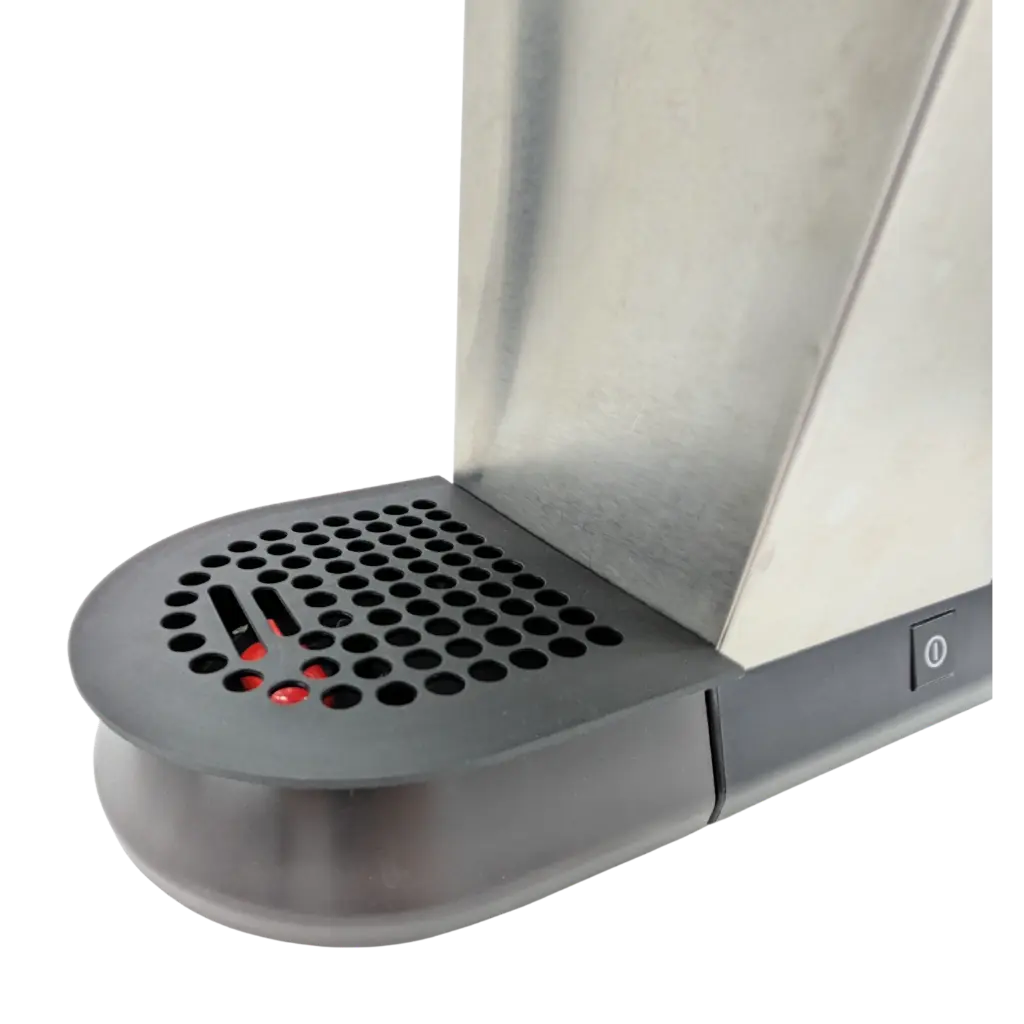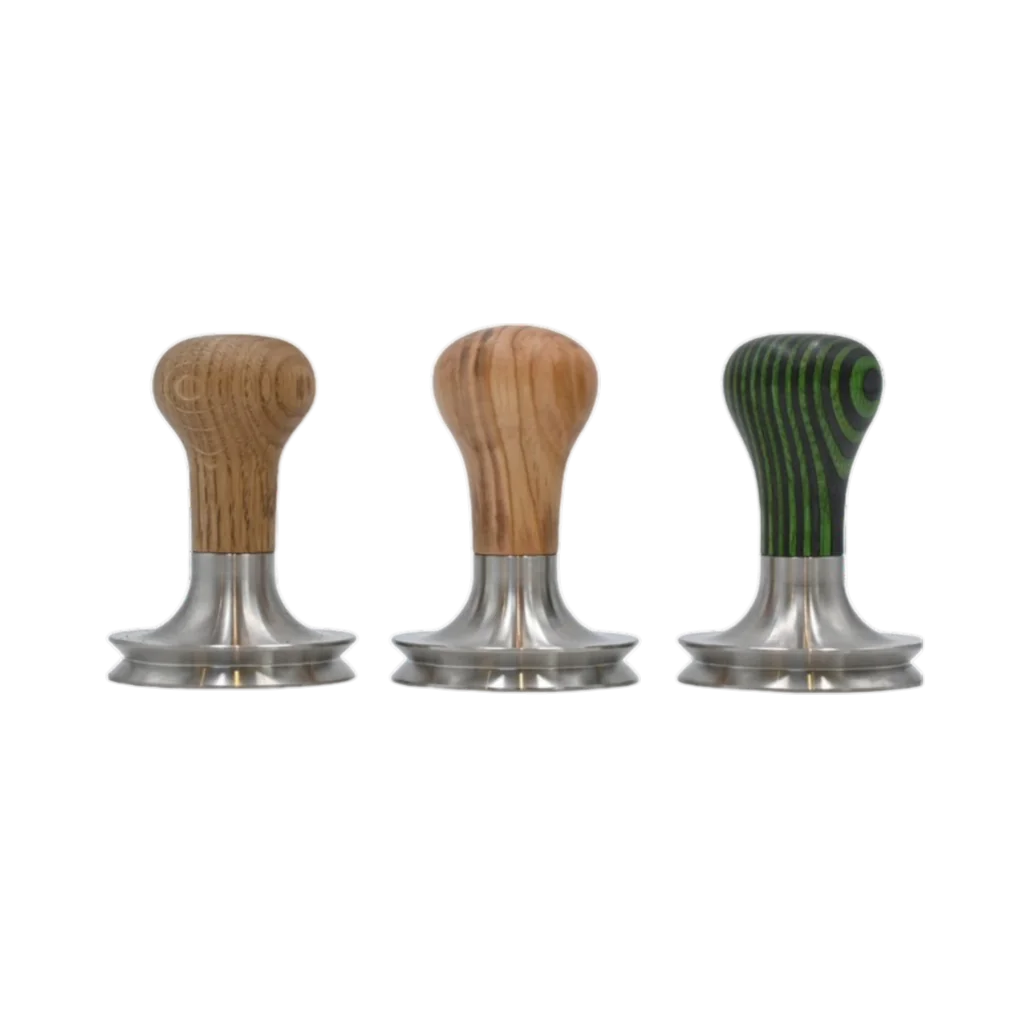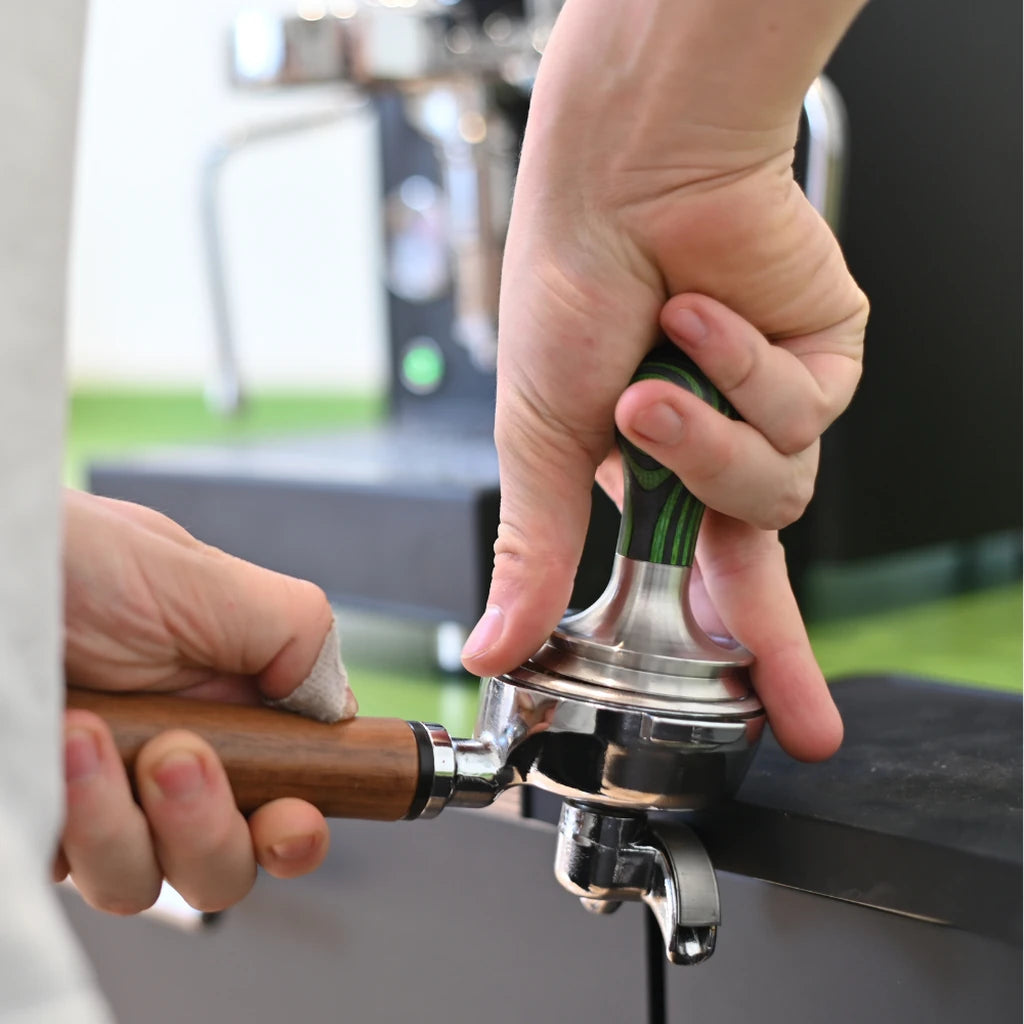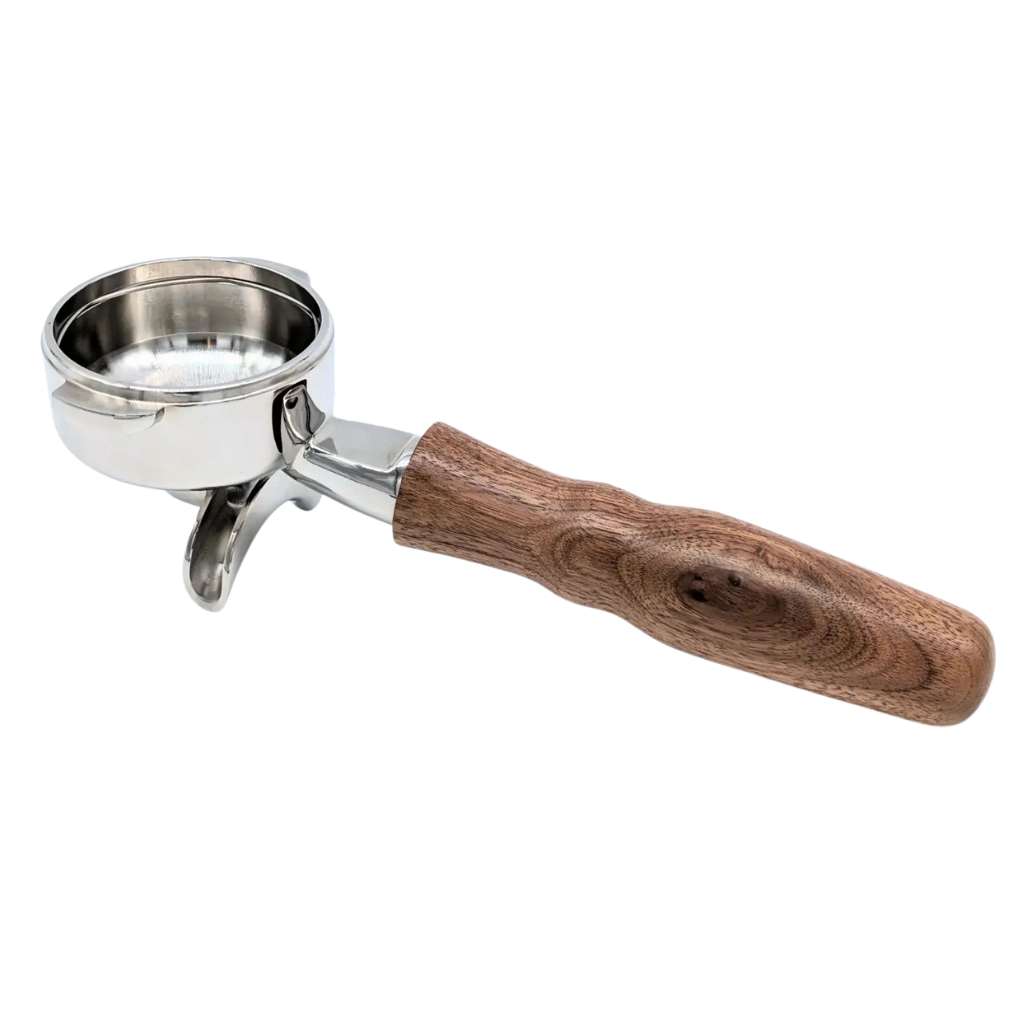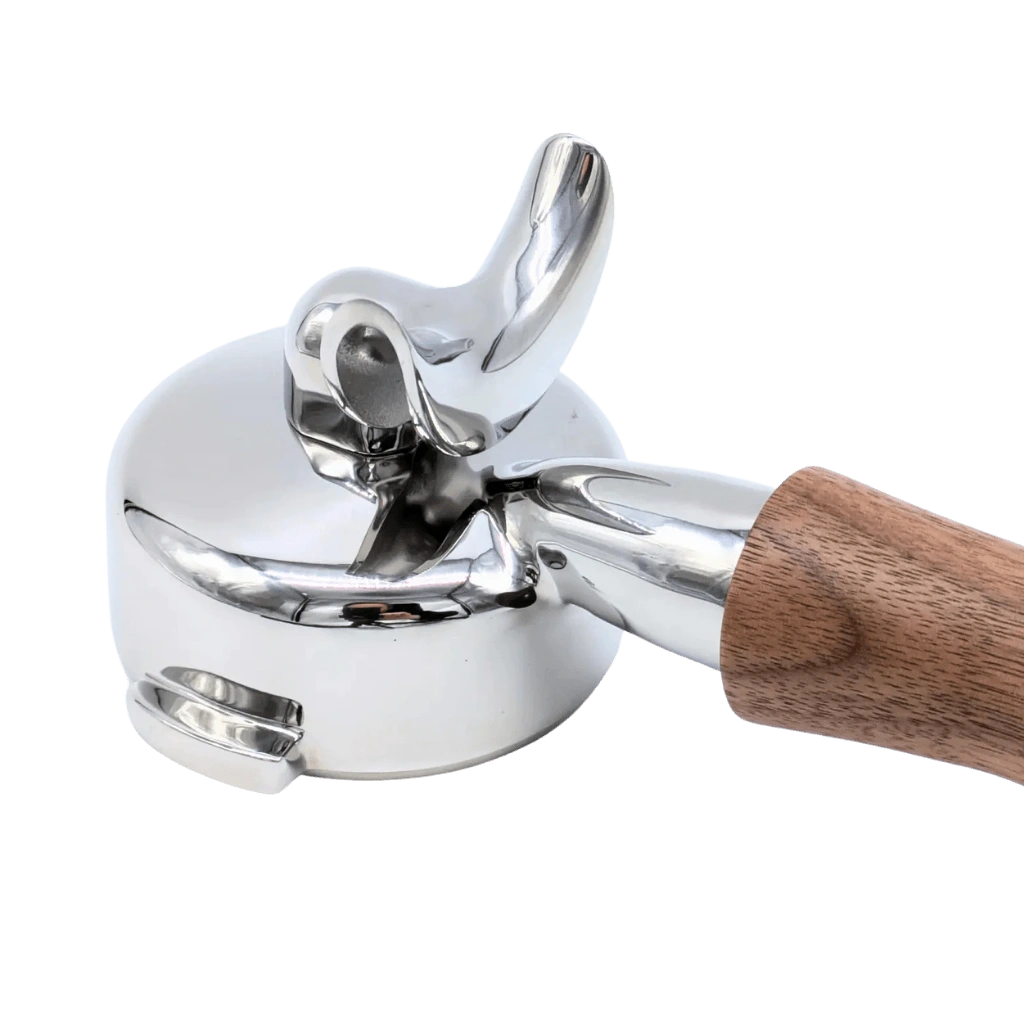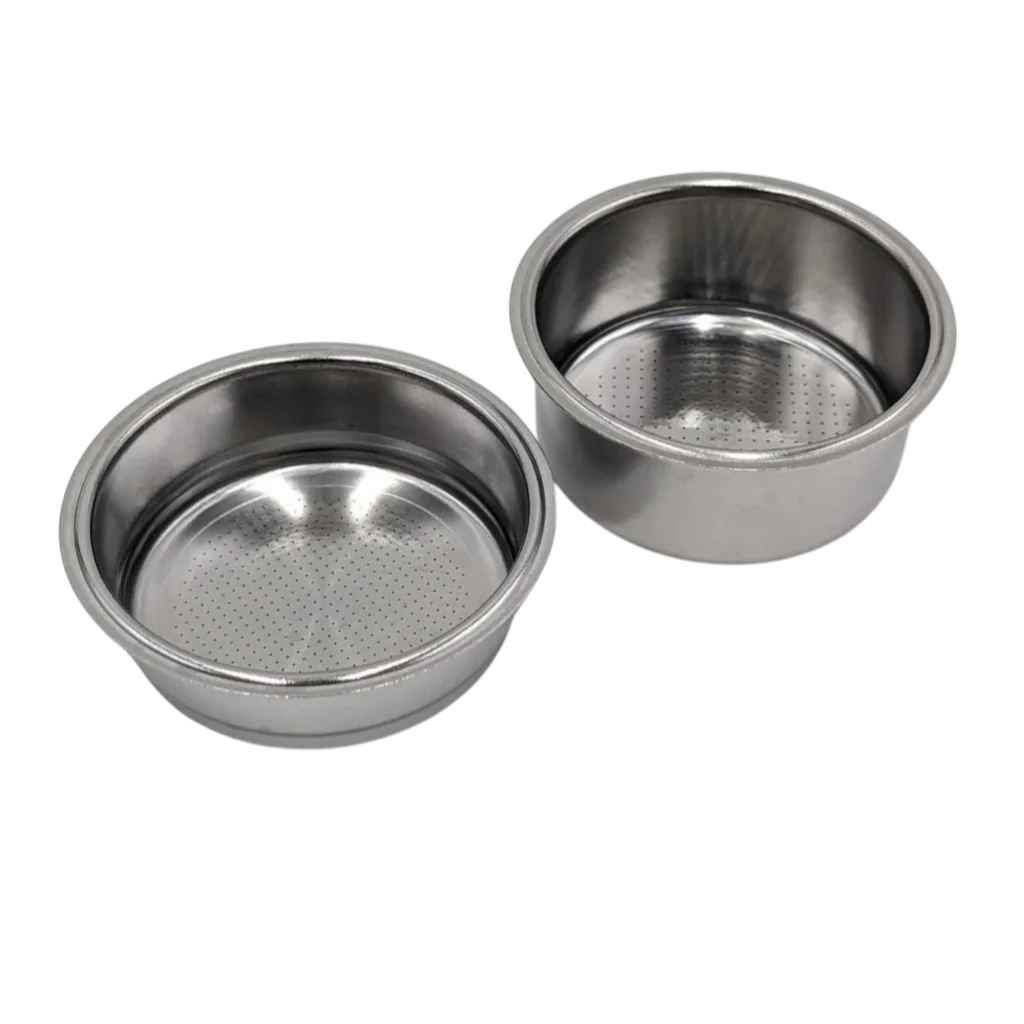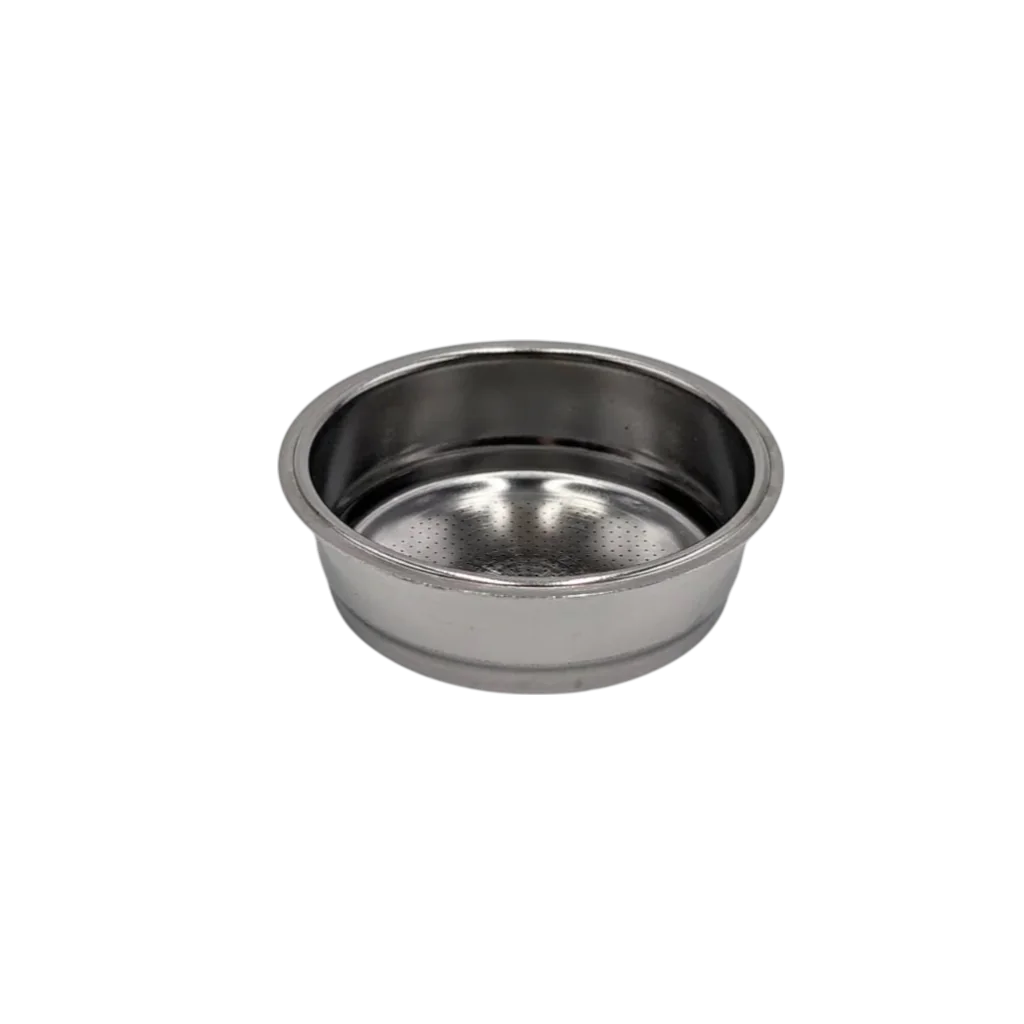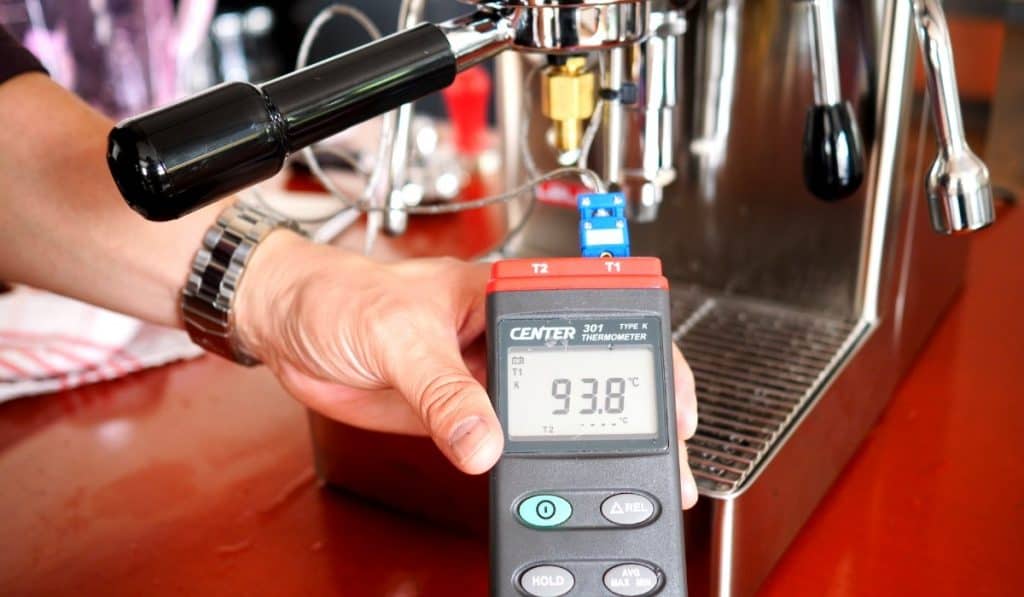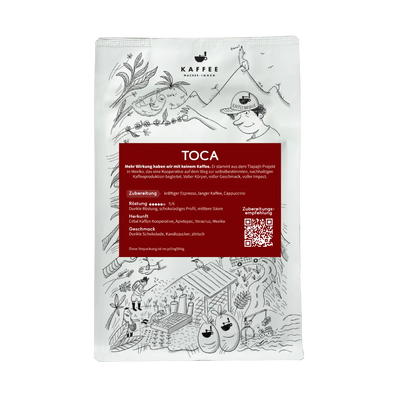In our last post, we tested different espresso brewing temperatures and their impact on flavor. Here, we'll show you how and where to measure espresso brewing temperatures, and how you can measure your machine's temperature at home.
The perfect brewing temperature for espresso is between 91° and 95° . For a darker roast, we recommend a range of 91° to 93°. For lighter roasts, we recommend an espresso brewing temperature of 93° to 95°.
Why not try it at home , set different brewing temperatures, and see what tastes best to you. The question here, however, is where exactly we measure, and how precise the whole thing is.
Espresso and brewing temperature – a lot of discussion
Ever since I started exploring the topic of coffee, brewing temperature has always been worth a long discussion. Different brewing systems and brewing group designs significantly alter the consistency and influence of temperature. As a result, there is often a lack of clear information about the optimal brewing temperature range.
Despite this, or perhaps precisely because of it, we addressed this topic and first examined the sensory changes and the strength or extraction. The following questions rightly followed on the blog and in the comments of the YouTube video :
- Where do you measure the temperature?
- How consistent is such a machine?
- How precise are these measurements?
To answer these questions, we first need to understand the design of boilers and brewing groups and their influence on temperature.
Espresso brewing temperature for thermoblock machines
A thermoblock heats the water as it flows through a pipe within the block. This also means that the inlet temperature is crucial for small thermoblock systems.
Fresh tap water is generally cooler than water that has been sitting in the machine's tank for a while and has reached ambient temperature. The two water temperatures are different and require different heating times. Thus, in this case, we end up with different brewing temperatures.
We recommend always using fresh water to keep the initial temperature constant. The larger the thermoblock, the fewer fluctuations you can expect. In sophisticated systems, like the one we see in the Decent Espresso machine , the thermoblock performs more consistently than a boiler system. This works because the brewing group is preheated by an additional heater, and numerous temperature sensors monitor the water supply.
The thermoblock is measured using a thermostat that often switches on and off within 5-6 degrees. Thus, for example, it starts heating at 104°C and stops again at 110°C. Temperature fluctuations can also occur here.
The measured temperature is the temperature in the block and not the actual brewing temperature . Depending on the design, this is between 87°C and 93°C.
Caution – brewing temperature too cold with the thermoblock if…
If you rinse the group just before brewing. This is because the thermoblock remains at approximately 104°C before brewing. If you start brewing and then turn on the boiler heating at the same moment, you'll start brewing at approximately 87°C and end it too hot. Therefore, we recommend rinsing thermoblock machines immediately after removing the portafilter and thus before grinding, so that the thermoblock can heat up again. Thermoblock machines generally run too cold rather than too hot.
Brewing procedure for thermoblock machines
- Unclamp the portafilter
- Rinse the group briefly, briefly draw water
- grind and fill portafilter
- extract
After step two, the thermoblock heats up quickly and you reach the higher brewing temperature.
Thermostat and pressure switch instead of PID
In almost all boiler machines without a temperature control (PID), the temperature is controlled by a mechanical thermostat or pressure switch.
The thermostat
Let's start with the thermostat, as this is less common and usually found in cheaper machines. As soon as the boiler cools down a bit, it signals the heater to heat up again. Since we generally have much more water in a boiler than in a thermoblock, boiler machines have a much more consistent temperature. The thermostat also regulates the temperature within approximately 5 degrees.
The pressure switch
A pressure switch is somewhat more precise, and is therefore also installed in most dual-circuit systems without PID. This also transmits the heating signal to the heater, but regulates this via pressure . Both methods measure the steam in the boiler.
With a built-in boiler, usually with a capacity of 1.5 to 1.8 liters, the temperature fluctuates slightly in both systems. The functionality of a so-called heat exchanger, the embedded cylinder in a classic dual-circuit machine, keeps temperature fluctuations to a minimum. Adequate rinsing before brewing also helps reduce the temperature of the thermo-syphon system (the design of a Faema E61 brewing group, in which the water constantly circulates) in front of the brewing group, preventing the coffee from being extracted at too high a temperature, making it more bitter than it should be.
The principle applies here too: the larger the boiler, the more consistent the brewing. A 3-liter boiler holds a much larger volume of water, which then loses much less temperature, especially during extraction. This also applies when the pump pumps cold water from the water tank into the heat exchanger. The results in your cup are significantly more consistent. With the Basilea with PID and a 3-liter boiler, we measured a temperature fluctuation of less than 0.4 degrees Celsius —this is world championship level!
Where do we measure on machines with temperature control?
First of all, there are major differences between dual-circuit PID boilers and dual or multi-boiler boilers. We've discussed in detail how these machines are constructed and how they work in this article .
Dual-circuit with PID
Let's take the next step in the price segment and move on to dual-circuit systems with PID. Now, instead of measuring mechanically via a pressure switch or thermostat, we use a sensor. This allows for precise measurement and precise control of the heating. Often, dual-circuit systems without PID either heat up to full capacity or don't heat at all. Once a sensor is installed, the heating in the boiler maintains a more constant temperature, either by heating up to full capacity or by applying selective heat pulses.
Measure PID correctly
Measurements are then taken in the steam range. Therefore, with PID machines, you always need to convert the displayed temperature based on the operating instructions .
For example, a boiler temperature displayed at 124°C can correspond to a brewing temperature of approximately 92.5°C. Always consult your machine's manual, as this varies from manufacturer to manufacturer.
We would also recommend rinsing the coffee machine directly before brewing if you use PID, as the water in the brewing head can heat up considerably, meaning you start brewing at a very high temperature.
Dual or multi-boiler
For the luxury models with dual or multi-boilers, we measure separately in each boiler. This allows for a very high steam temperature, regardless of a different brewing temperature setting. But again, the larger the boiler, especially the coffee boiler, the more consistent your brewing will be.
The new systems in the professional catering sector go even further. To achieve a temperature fluctuation of less than 0.5 degrees Celsius during brewing, the brewing groups are now actively heated to make this even more consistent. This culminates in a multi-boiler machine with two coffee boilers per brewing group and active boiler heating. This minimizes fluctuations to 0.1 to 0.2 °C, making them negligible.
Measuring the espresso brewing temperature at home
To measure the brewing temperature on your own machine, you need a temperature sensor, which you insert deep into the portafilter spout. Then, start a brew without coffee – it's important to always do this with a hot portafilter. Portafilters with built-in thermometers are also available. We use this, for example, for our tests, as it creates resistance to the pump.
If you want to measure with coffee, the water will naturally lose a lot of temperature at the beginning of the brewing process, as the coffee is at ambient temperature in the portafilter. You'll notice a significant increase during brewing.
But please don’t forget to drink coffee while you’re at the fair.



